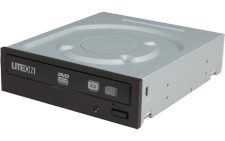DVD-RW
Stands for "Digital Versatile Disk Rewritable" and is pronounced "DVD dash RW."
DVD-RW is one of two standards for rewritable DVDs, along with DVD+RW. A rewritable DVD-RW disc can be written to, erased, and then written to again up to 1,000 times. DVD-RW discs have a capacity of 4.7 GB of data or video. Rewritable optical discs like DVD-RW are not as well-supported by DVD players as write-once formats (like DVD-R) or commercially-pressed discs but are still readable by most players. Only a compatible DVD-RW or Hybrid (DVD±RW) optical drive can write to a DVD-RW disc.
DVD-RW and DVD+RW discs are both rewritable optical media formats. Once written, a disc's contents are read-only until the disc is erased and rewritten. Since you cannot edit files directly on a disc, they're a poor choice for storing files that need to be frequently modified. Instead, the format is better suited for making frequent data backups.
An optical disc drive that can write discs has three lasers—a low-power laser that reads data, a medium-power laser that erases rewritable discs, and a high-power laser that burns data to a disc. A DVD-RW drive burns a series of spots onto a reflective layer of a phase change metal alloy on the underside of the disc. At first, this metal alloy exists in a crystalline form that lets light through. A high-power burning laser heats the alloy past its melting point, which then turns opaque as it cools. These opaque spots encode digital data that the reading laser in the drive reads and decodes. When it's time to erase a disc, the drive uses the medium-powered erase laser to heat the alloy layer to its crystallization point.
 Test Your Knowledge
Test Your Knowledge